Nikon
Latest

How computational photography is making your photos better
Phone cameras have undergone huge improvements in recent years, but they've done so without the hardware changing all that much. Sure, lenses and sensors continue to improve, but the big developments have all been in software. So-called computational photography is using algorithms and even machine learning to stitch together multiple photos to yield better results than were previously possible from a tiny lens and sensor. Smartphones are limited by physics. With a small sensor, narrow lens aperture and shallow depth, there are serious challenges in designing an improved phone camera. In particular, these mini cameras suffer from noise -- digital static in the images -- particularly in low light. Combine this with limited dynamic range, and you've got a camera that can perform pretty well in bright daylight, but where image quality starts to suffer as the light dims.

Hands-on with the Z 50, Nikon's first mirrorless APS-C camera
Nikon has unveiled its first-ever APS-C DX mirrorless camera, the 20.8-megapixel Z 50. That makes two different camera systems launched a year apart, which is quite a pace for a conservative company like Nikon. The Z 50 is less than half the price of the Z 6, so it should appeal to a broader market, especially folks who already own Nikon DSLR lenses. Nikon now has both full-frame and crop sensor mirrorless systems, just like its rivals Canon and Sony. Just over a year ago, it essentially had zero, not counting the moribund Nikon 1. The company decided to follow Sony's lead by using the same mount for both systems to allow for lens compatibility and because the large diameter allows it to build sharper glass, according to a Nikon spokesperson. Meanwhile, Canon uses two different mirrorless mounts (EOS R and M mount) that aren't compatible with each other.
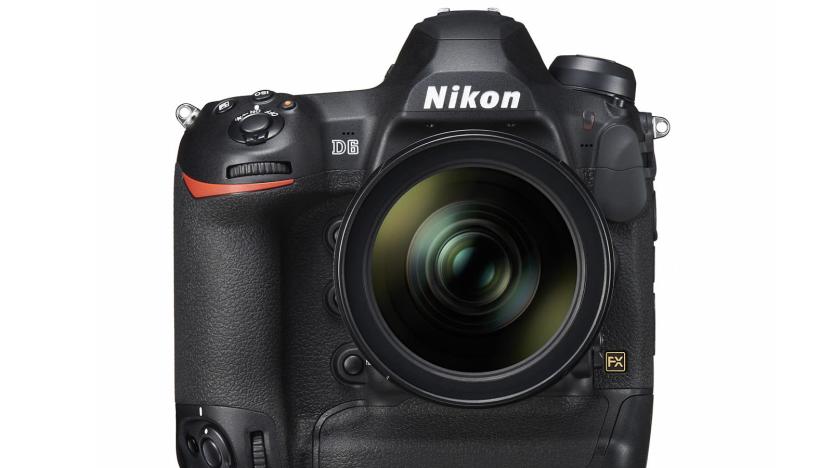
Nikon's beastly D6 will be its 'most advanced DSLR to date'
Nikon has announced that it's working on its next professional flagship camera, the D6, promising its "most advanced DSLR to date." The company didn't reveal any specs (other than a photo), but it's bound to be a big leap ahead of the nearly four-year-old D5. Since then, sensor and processor technology have advanced drastically, so we can expect to see things like eye tracking on top of insane autofocus and shooting speeds.

Nikon updates its SnapBridge app for faster image transfers
Nikon has unveiled an updated version of its SnapBridge app with new features aimed at generally making it easier for photographers to share their work online. SnapBridge version 2.6 gives users more options for camera control and faster image transfers. The update allows for the download of RAW images through WiFi. Those with DSLR cameras can also use their smartphones to adjust their camera's focus, aperture, shutter speed, white balance and more.
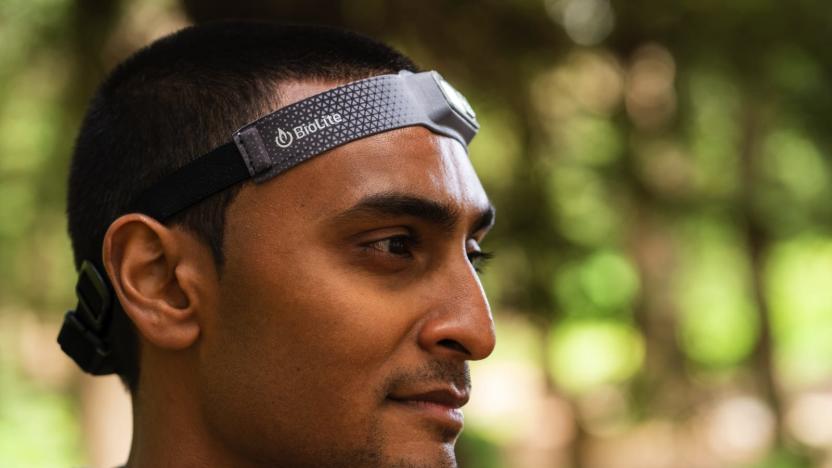
How to give your hike a high-tech upgrade
Here's all of the gear you need to take your hiking game to the next level.

Nikon plans an answer to Sony's A9 mirrorless pro camera
You knew Nikon was going to expand its mirrorless camera lineup after the Z6 and Z7 arrived, but in what direction? Now you know. Company president Toshikazu Umatate has revealed to Nikkan Kogyo Shimbun that Nikon will release a mirrorless "equivalent" to its flagship pro DSLR, the D5. He didn't provide a timetable or technical details, but the D5 is meant as a no-compromise cam with high-speed shooting and low light prowess. You could expect similar abilities, just with the benefit of a few years of technological progress.
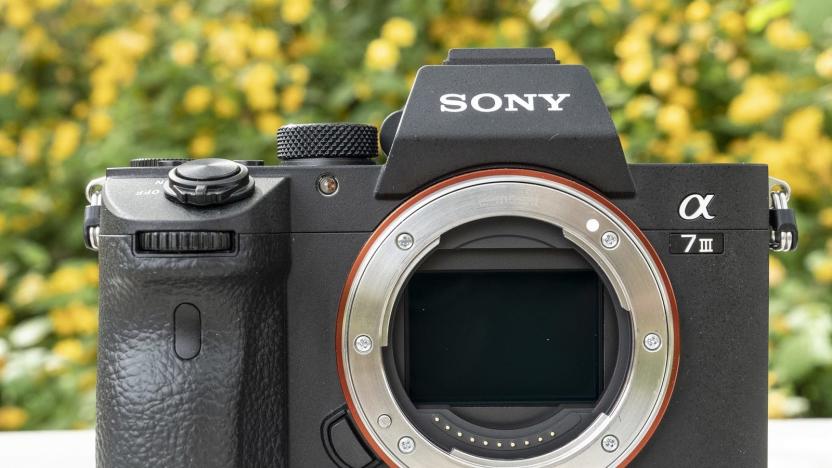
Why Sony still dominates the full-frame camera market
Before Canon and Nikon even launched their all-new full-frame mirrorless camera systems, I figured they'd have a tough time against the entrenched leader, Sony. They needed to be very aggressive with the pricing and features, something neither company tends to do. But the opportunity was there. Both were building all-new camera systems from scratch, so they could examine what made Sony's stellar A7 III and A7R III cameras successful and then try to do better. Canon's EOS R and EOS RP, and Nikon's Z 6 and Z 7 have now been on sale for a few months, so what's the verdict? Well, the market has spoken loud and clear. At least in Japan, the home market of all these companies, the Sony A7 III is the clear leader in sales while Canon and Nikon have dropped. So what went wrong? After testing all the cameras, I believe it's a tale of Sony's technological superiority and missed opportunities by its rivals, especially Canon.
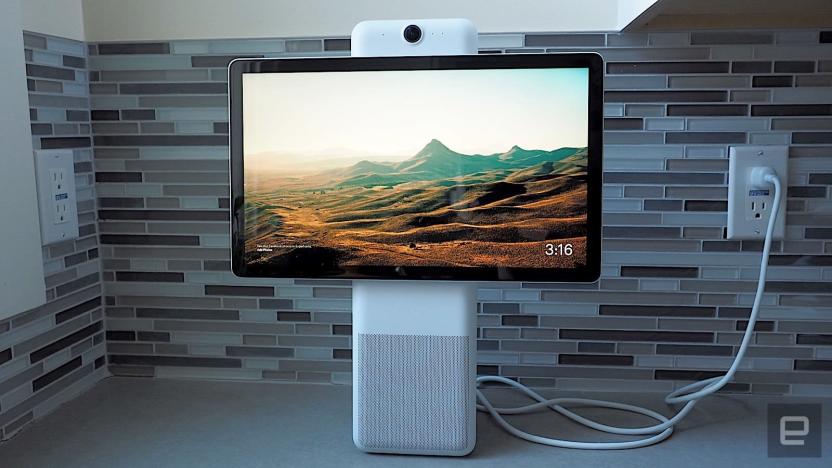
Recommended Reading: Trusting companies despite privacy lapses
People say they care about privacy but they continue to buy devices that can spy on them Rani Molla, Vox In the wake of Cambridge Analytica, concerns about personal data privacy abound. Of course, Facebook isn't the only company that's been caught collecting and sharing user details it shouldn't have. What's most interesting about this entire saga is the fact that we continue to trust the likes of Amazon, Google and others despite these lapses. We continue to buy devices with cameras, microphones and other tech, and willingly put them in our homes. Recode data reporter Rani Molla explains why our trust hasn't entirely eroded in a piece for Vox.
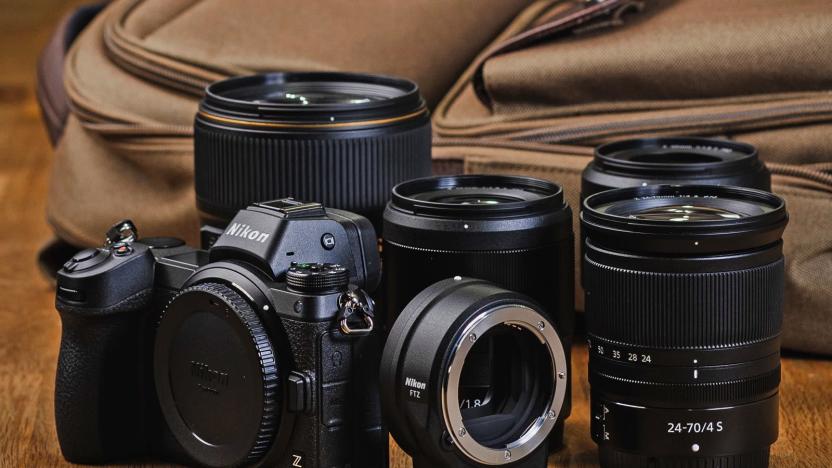
The best lenses for Nikon Z mount
While Canon went big in both price and performance with its low-light specialist $2,300 RF 50mm f/1.2L USM lens, Nikon elected to release the cheaper, slower $600 Nikkor Z 50mm f/1.8 S. Don't be fooled by the price, though. While it's a stop slower than Canon's offering, this is still a very speedy lens, as f/1.8 is plenty fast enough for most shooting situations. Of course, it helps that this might be Nikon's sharpest, most flare-resistant lens ever. And to top it all off, it has great bokeh characteristics. READ ON: The best lenses for Nikon Z mount

Photographers, tell us your thoughts about the Nikon Z6
When photographer and Engadget editor Steve Dent spent some time with Nikon's full-frame mirrorless Z6 model last December, he found it was a serious competitor to Sony's exceptional A7 III. The 24.5-megapixel sensor, 1080p shooting capability and 5-axis in-body stabilization all earned the Z6 points. However, the single card slot, limited lens selection and slow autofocus tracking were drawbacks. The Z6 still wrangled a solid score of 89, with Steve saying it was "bested only by the A7 III."
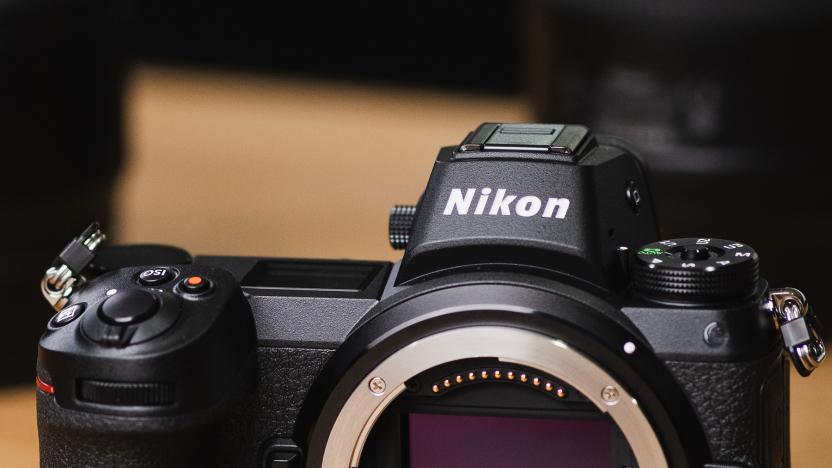
What makes mirrorless cameras unique?
While most photographers have left film far behind, many of us are still reliant on another piece of camera tech that's over 70 years old: a mirror. Mirrorless cameras ditch that mirror to let lenses project light directly onto the sensor, and that leads to a host of other differences in how they capture images when compared to their DSLR forebearers.

A brief history of mirrorless cameras
Mirrorless cameras are here to stay. The argument to own one isn't only about them being small and lightweight anymore, because nowadays many mirrorless shooters rival DSLRs in image quality -- something that would've been unimaginable a decade or so ago. Today, the likes of the Sony A7 III, Nikon Z7, Canon EOS R and Panasonic S1R are some of the best cameras, period. But none of these flagships would exist today if it weren't for the hundreds of Micro Four Thirds and APS-C models that came before them, some of which are still popular and have paved the way for manufacturers to turn photographers and videographers alike into mirrorless fans.
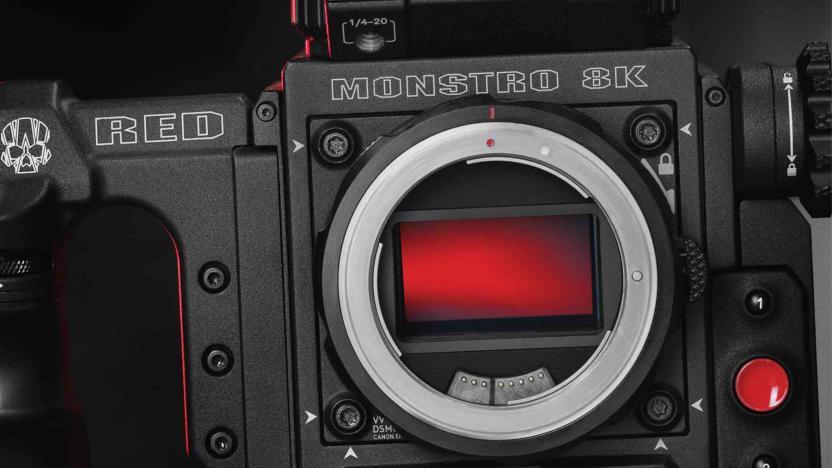
The cameras YouTubers love
It's easy to forget that for some of the world's biggest YouTube creators, their rise to internet stardom all started with making videos on a webcam. That's exactly how people like Marques Brownlee (aka MKBHD) and Justine Ezarik (aka iJustine), who now have more than 8 and 5 million subscribers, respectively, began their careers as YouTubers almost a decade ago. But for both of them, gone are the days of using a webcam to create video content. As technologies such as full-frame mirrorless cameras, 4K and 8K have emerged, so too has Brownlee's and Ezarik's desire to up their production value -- especially since their channels focus on consumer electronics. In 2019, videos from Ezarik and Brownlee can rival quality from TV shows and films, thanks to their investment in cameras like Sony's A7III and RED's 8K-ready DSMC2 Brain. The latter is a $60,000 system, which shows just how serious Brownlee is about the videos he makes. And Ezarik and Brownlee aren't the only ones trying to push the envelope for YouTube creators. Jacques Slade, whose channel about sneakers and tech has more than 1 million subscribers, works with a camera setup that consists of three Sony A7 IIIs. Popular YouTuber Casey Neistat, meanwhile, switches among a Canon 6D Mark II DSLR and Sony's A7R II and A7S II full-frame mirrorless shooters. It's clear there isn't a one-camera-fits-all solution for YouTube creators; they each have their own preference based on the brands they like, their audience and what they're shooting on any given day. For example, when Brownlee isn't using his RED 8K camera because he needs a smaller and lighter shooter, he'll jump to the Canon EOS-1D X Mark II. That's a long way from the webcam he started with on YouTube in 2009. To learn more about Brownlee's and others' choices, we spoke to some of the world's biggest YouTubers, who talked about the cameras they started with, what they're using now and what they recommend for newcomer creators.
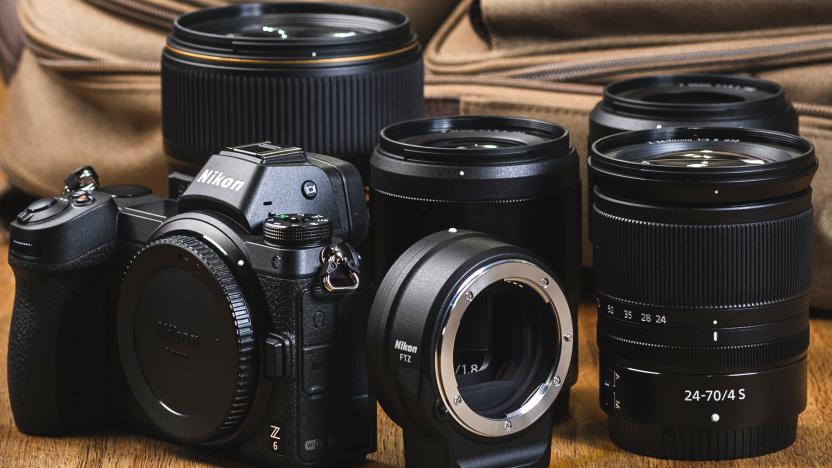
How to pick a lens for your mirrorless camera in 2019
When buying a mirrorless camera, there's an equally crucial side question: What lenses do I need for this thing? The glass you place in front of that sensor plays a key role in how your photos or videos look and what kind of shooting you can do. It's a complex decision too. You need to consider factors like sharpness, distortion, speed, prime or zoom and, most important, price. In this guide, I'll touch on all that and look at some of the best lenses for Sony, Canon, Nikon, Fujifilm and Micro Four Thirds mirrorless cameras.

How to buy a mirrorless camera in 2019
You can mark down 2019 as the year that mirrorless cameras vaulted to the top of photographers' wish lists. They sold nearly as well as DSLRs in 2018, thanks largely to Sony, and may outsell them for the first time in 2019. That's because the number available exploded at the end of 2018 and most of the important new cameras are mirrorless models. All of them have improved autofocus tech, better electronic viewfinders and excellent 4K video features. Nikon, Canon and Fujifilm are determined to cut into Sony's market share, so they all released new models -- to various degrees of critical acclaim. And it's working: Where Sony once had 99.5 percent of the full-frame mirrorless market in Japan, for instance, its share has dropped to 60 percent. More choice is terrific, but it does make your buying decision more difficult, which is why we're here. Our deep and detailed camera guide, dedicated to mirrorless models, will help you sort out which one that suits you best, depending on your needs and budget.

Engadget at 15: A look at how much tech has changed
A lot has changed since Engadget was born, both in the gadgets we use and what we do with them on a regular basis. When the site started in 2004, fitness trackers, voice assistants and electric cars were the stuff of fiction. Now most of these are commonplace, so much so that we put our trust in them on a daily basis. To celebrate Engadget's 15th birthday, here are 15 things that didn't exist 15 years ago.

Canon’s next full-frame mirrorless camera is the EOS RP
Well, it looks like the recent rumors were spot on: Canon is getting ready to launch a compact version of its EOS R camera. And here it is. Meet the EOS RP, a full-frame mirrorless shooter that costs a reasonable $1,299 (body-only). For those of you keeping track at home, that's $1,000 less than the EOS R, which just arrived in October of 2018.

YouTuber Sara Dietschy talks filmmaking gear
Sara Dietschy, a bona fide social media influencer, sits down to talk about video gadgets. We take apart the vlogger duopoly of Canon and Sony and each camera's pros and cons. Then we talk about some new options in the mirrorless space, like the Panasonic S1R and the Nikon Z6 and Z7. But what about video editing? Sara breaks down her production process and, in a stunning twist, advocates for editing on desktops rather than laptops.

Canon, Nikon, and the future of mirrorless cameras
This has been a big year for the camera industry, with Nikon and Canon releasing their first professional full-frame mirrorless cameras. As the name implies, these cameras ditch the traditional mirror and moving parts of a DSLR for a more compact body. But Nikon and Canon's models are a little late to the party, and Sony, Fuji and Panasonic have carved out a bigger share of the market. Just as important though, Nikon and Canon's mirrorless cameras also served to launch new lens mounts (and accompanying sets of lenses) from both companies. Lens mounts are at the heart of any camera and are generally standard for 30 years or more -- an eternity in our current era of disposable tech. These new mounts were a tricky proposition. They had to enable future technologies without alienating pros who've spent thousands of dollars on existing lenses. We sat down with Steve Heiner of Nikon and Drew Maccallum of Canon - both veterans of the photo world to talk about these new mirrorless cameras and what the future of photography has in store.

Nikon Z6 and Z7 updates help portrait shooters and videographers
Nikon's new Z-Mount Z6 and Z7 cameras are getting some key new features they lacked at launch via an upcoming firmware update, the company announced. The biggest one is eye-detect autofocus that will lock onto a subject's eyes, rather than just their entire face. That will ensure that your subject's eyes are in focus rather than their nose, which can be a big problem on full-frame cameras with fast, shallow depth-of-field prime lenses. Nikon showed just how it will work in the short video below.







